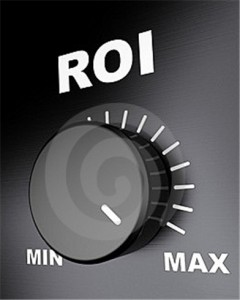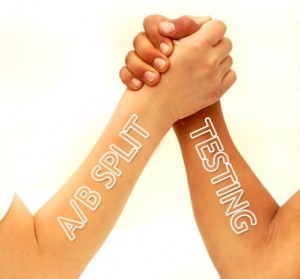 Mobile technology is changing business faster than the Internet did at the time of its birth. The web opened opportunities for all businesses and even created a few new ones, but with the speed in which consumers are adopting mobile technology the impact on almost every industry is going to be profound. So with apps for just about everything where are the SEO tools? Sure customers are searching from their phones, their tablets and theirTricorders or whatever but as a search engine optimization professional what mobile tools are available to us? It would seem there are plenty.
Mobile technology is changing business faster than the Internet did at the time of its birth. The web opened opportunities for all businesses and even created a few new ones, but with the speed in which consumers are adopting mobile technology the impact on almost every industry is going to be profound. So with apps for just about everything where are the SEO tools? Sure customers are searching from their phones, their tablets and theirTricorders or whatever but as a search engine optimization professional what mobile tools are available to us? It would seem there are plenty.
Here are three qualitySEO tools available now for Android users that will help any webmaster keep up with his or her online business on the road or in the yard. Not all of us are road warriors after all but it’s still important to keep our finger on the pulse of our business while hanging out next to the pool.
 Aaron Wall of SEOBook recently predicted that, in 2013, SEOs who “remain overly-public will continue to invent language to serve their own commercial purposes while chastising those who do not fall in line.” I appear to be living up to (the first part) of that promise because I’m calling it: the breakthrough ranking factor of 2013 will be “waves,” a term I just made up.
Aaron Wall of SEOBook recently predicted that, in 2013, SEOs who “remain overly-public will continue to invent language to serve their own commercial purposes while chastising those who do not fall in line.” I appear to be living up to (the first part) of that promise because I’m calling it: the breakthrough ranking factor of 2013 will be “waves,” a term I just made up.
This will be a somewhat speculative post, so I feel compelled to say that these opinions are my own, and don’t necessarily reflect the opinions of Northcutt as a whole.
Where did this crazy idea come from? It started with the realization that, back in 2009, Google’s Chief Economist told McKinsey Quarterly “I keep saying the sexy job in the next ten years will be statisticians. People think I’m joking, but who would’ve guessed that computer engineers would’ve been the sexy job of the 1990s?”
Another Facebook advertising glitch yesterday, December 7, 2012. A poorly built system now completely not able to launch an ad. Not sure who else has experienced the new approval method on Facebook for ad copy, but it will blow your mind how moronic it is. Surprise surprise, Facebook advertising not working again.
Yesterday when I updated a routine ad campaign, to advertise a recent post for a client, I performed the usual: chose a recent post, and unpaused the campaign. Typically the ad stays in Pending Review and is automatically approved within a few hours, and we receive an email confirming when it launches. Not this time. With no explanation, while I happened to be on my personal Facebook page, a frame “Your Ad is Almost Ready!” and invites me to Finish My Ad. That’s odd since I finished it hours ago.
Round two, the following day, ad campaign still pending review, nothing launched, I see the same Frame “Your Ad is Almost Ready” and this time the ad is correct. Success you think? Afraid not, clicking Approve Ad also takes you back to the same page, nothing will approve and the ad will not launch. It’s broke.
Facebook just implemented a system where an ad you already approved has to be approved by you a second time? And you only know this if you happen to log on to your Facebook page later that day? No email notice for this? No warning you will be expected to approve it? And then it does not even work? That has to be great for conversions! The most popular website on the planet in dire need for advertising revenue, and their systems are not tested before launch.
This is the equivalent of checking out at Amazon, and randomly visiting their site later in the day to be asked “Are you sure you really really want to buy these things?” and they are not the right things. Or you do click Yes I Really Really Want to Buy These Things, and are ignored. No sale, no shipping, no conversion.
I wish I could share a solution for anyone experiencing this right now. Yeah yeah, try a different browser, clear your cache, delete the entire campaign and start over, RIIIIIIGHT, I’ll get right on that. I think I’ll turn up our AdWords campaign instead.
Rant over.
Part II in this series covered the importance of the roles of testing and modification in the development of successful conversion optimization. Now we will attempt to make sense of what we convert.
 I remember a very energetic web guy back in the dot.com glory days who pitched us on his money-making system with the declaration, “He who has the most data wins!”
I remember a very energetic web guy back in the dot.com glory days who pitched us on his money-making system with the declaration, “He who has the most data wins!”
I must admit, I thought that was pretty cool and used it myself a time or two to impress people. But experience has shown me that quality data is really the key, because today we can measure things to the point of becoming overwhelmed.
Metrics are everywhere. Just watch a sports show on TV and you’ll see how every aspect of player performance has some sort of statistic. And if you have ever witnessed a presentation of data in a meeting you have probably also witnessed eyes glazing over and slow little pools of dribble accumulating out of the mouths of those present. Try and avoid that.
Quality data starts with the basics first:
Once you have these core metrics you can compare them based on historical data over time and then you’ve got half the battle won already. But there is more to know. And the more you immerse yourself in simple data, the easier it becomes to start to peel out more granular information that turns into actionable data, such as:
In Part I of this series, we examined what to measure, The Funnel, and landing pages. In Part II we will put this preparation into action.
 After all the effort people put into setting up programs and campaigns, nothing amazes us more than how seldom site owners or managers check to actually see if their whole process works. Emailed form results that disappear into cyber oblivion, missing images, or simple broken links are among the most common things we witness.
After all the effort people put into setting up programs and campaigns, nothing amazes us more than how seldom site owners or managers check to actually see if their whole process works. Emailed form results that disappear into cyber oblivion, missing images, or simple broken links are among the most common things we witness.
But these mistakes can be far worse.
I recall a client coming to us several years ago with a very nice healthcare supplement website he just had built. It was well designed and e-commerce equipped and he had product ready for fulfillment. He asked us to see if we could strengthen some of the marketing copy on his order pages as his orders just seemed to be “way down.”
We dove in to take a look. The site was organized and some of his product names were very clever. After spooling through several categories and pages, we decided to see how easy his purchase process was. And we liked his site so well, we thought, What the heck, even if we end up buying something just to test it out, it’s worth it. Some of us could certainly use that Ear Nibbler Female Pheromone! We zeroed in the product, chose our quantity, resisted the add-ons and upsell items, broke out the credit card, armed ourselves for purchase, and hit BUY NOW.
Only to stare in disbelief as an error page came up. FAIL.
Can you imagine? All the time and money that went into gathering that sale ended in error. And he didn’t just have one page like that, he had many. Needless to say, all the slick copy in the world wasn’t going to improve his sales. But the larger point is, while we’re not saying you have to be perfect, if you don’t test to see if your setup works, all you’re setting yourself up for is failure.
Think of it like this: You’re trying to track a long-distance runner during a race, but you stop clocking him before he finishes.
 So…what was his final time and finish position? Before you high five all of your colleagues and look back with pride on the fact that you had a runner, realize that with true conversion optimization, you should not only know what the finish order was, you should even be capable of measuring whether your runner slowed down for water along the way.
So…what was his final time and finish position? Before you high five all of your colleagues and look back with pride on the fact that you had a runner, realize that with true conversion optimization, you should not only know what the finish order was, you should even be capable of measuring whether your runner slowed down for water along the way.
While this may seem obvious, in nearly every conversion optimization instance we’ve examined, site owners or managers had either no idea what to measure or were trying to assess only half of what was truly measurable.
Before you begin, make sure you are prepared. When it comes to leads, there can be many, many steps along the sales cycle before you have cash in your hand.

Nowadays, many people are using Pinterest to as a tool for promoting their ecommerce businesses. What makes Pinterest ideal for ecommerce is that it is a social media platform which is primarily visual. Since many people use photos to market their products, Pinterest offers a place where they can pin, link and share their photos. Using different pin boards, one can easily highlight different items. In addition, you can also post photos of future sales and products.
The following are some guidelines for using Pinterest for ecommerce.
1. Appear professional
Make sure your Pinterest account looks as professional as possible. Customize your profile page, arrange your pin boards appropriately and use unique and catchy board covers. Do your best to make your account stand out from others in your niche.
2. Include Pinterest widgets in your product pages
Having Pinterest widgets in your product pages will enable people to easily share your products. Whenever an image is repinned, it will still have a link to your product page, as well as your Pinterest profile. This will result in an increase of traffic to your ecommerce site.
 Blogging has become second nature to many people, and they are reaping the rewards. Business owners in any industry should learn how they could benefit from blogging. I have been blogging for the past 5+ years. You can check out all my ramblings about PPC here.
Blogging has become second nature to many people, and they are reaping the rewards. Business owners in any industry should learn how they could benefit from blogging. I have been blogging for the past 5+ years. You can check out all my ramblings about PPC here.
How businesses can benefit from blogging is by reaching and remaining on the first page of search engines. For instance; a garden/landscaping business has started a website with their products and services but have very little web traffic. It is not because they do not have good products or services, it is because they are not appearing on the first or second page when potential customers are searching for products they carry. The best step management can take at this point is to begin posting regularly (or hire someone to do it) with information about the gardening and landscaping industry.
Blogging is not meant to be blatant sales pitches; it is meant for informative, valuable content for the consumer. If each post is simply a picture of a product with a “the best there is” tag on it, website traffic will drop instead of rise. When the consumer sees something of value to them that they do not have to pay for (information in this case) they will tell their peers and share it on social networking sites.
Businesses can benefit from blogging by giving consumers free advice and ideas on how to use their products. In the gardening industry there are millions of products available so content should not have to be repeated. A top business blogger can easily pick one item per day to write about. In staying with the gardening theme the items and tips should be related to the season. This type of approach will keep consumers returning to the site on a regular basis to learn something new. As time goes on, the blog subscriber may become a regular customer as well.
 If you work in the field of SEO, you probably understand that Google controls everything. We constantly bend to its will and try to outthink it at every turn. Just as space travel is unpredictable because we haven’t yet experienced much of it, SEO is also a largely new frontier and we seldom know what to expect from our environment. Our environment, of course, is Google. But what if Google didn’t exist? Where would we look for sites? How would we get links? Your brain is probably boiling over with great ideas right now, and that’s the point of this whole thing—if we eliminate Google from the equation entirely, those paths that we come up with are almost completely organic.
If you work in the field of SEO, you probably understand that Google controls everything. We constantly bend to its will and try to outthink it at every turn. Just as space travel is unpredictable because we haven’t yet experienced much of it, SEO is also a largely new frontier and we seldom know what to expect from our environment. Our environment, of course, is Google. But what if Google didn’t exist? Where would we look for sites? How would we get links? Your brain is probably boiling over with great ideas right now, and that’s the point of this whole thing—if we eliminate Google from the equation entirely, those paths that we come up with are almost completely organic.
Google is extremely popular with both the general public and with SEO professionals, but it often locks us inside of a box. At some point we’re not exploring the web on our own, and instead we are relying on an algorithm and some web spiders to explore for us. We can break out of this box and choose our own destination in a natural, organic way. Considering the question “what if Google didn’t exist?” is a great way to answer the question “where can I get more links?”
Playing “what if?” is a fun, but sometimes dangerous, game. It’s easy to get stuck down in the mire of negativity and use “what if?” to fuel your own pessimistic fire. If you use it correctly, however, “what if?” can be a great catalyst for ideas and innovation. For example, think about the popular post apocalypse genre of fiction, where a shovel might become the protagonist’s best weapon, best tool and best friend. Similarly, in a world without Google, a message board buried somewhere inside of a mediocre site with low domain authority might become an excellent research tool. After all, if all of these people are willing to brave an underwhelming site just to talk to each other and share about a topic, that means they’re passionate about it. Passion leads to great info, great leads on new sites and useful links. Google does exist, of course, but thinking outside of that box produces some interesting results.